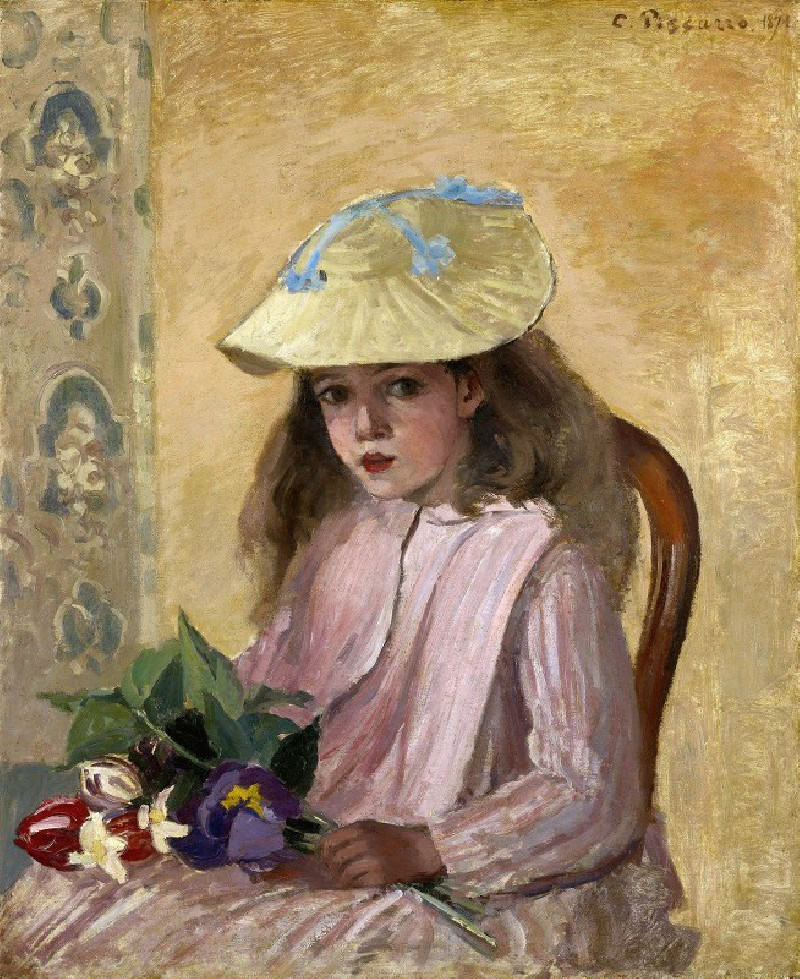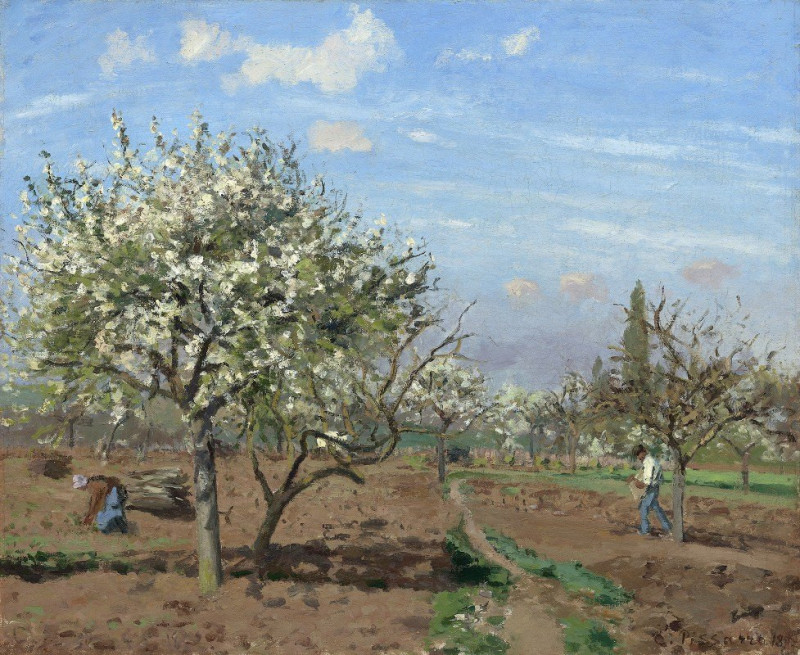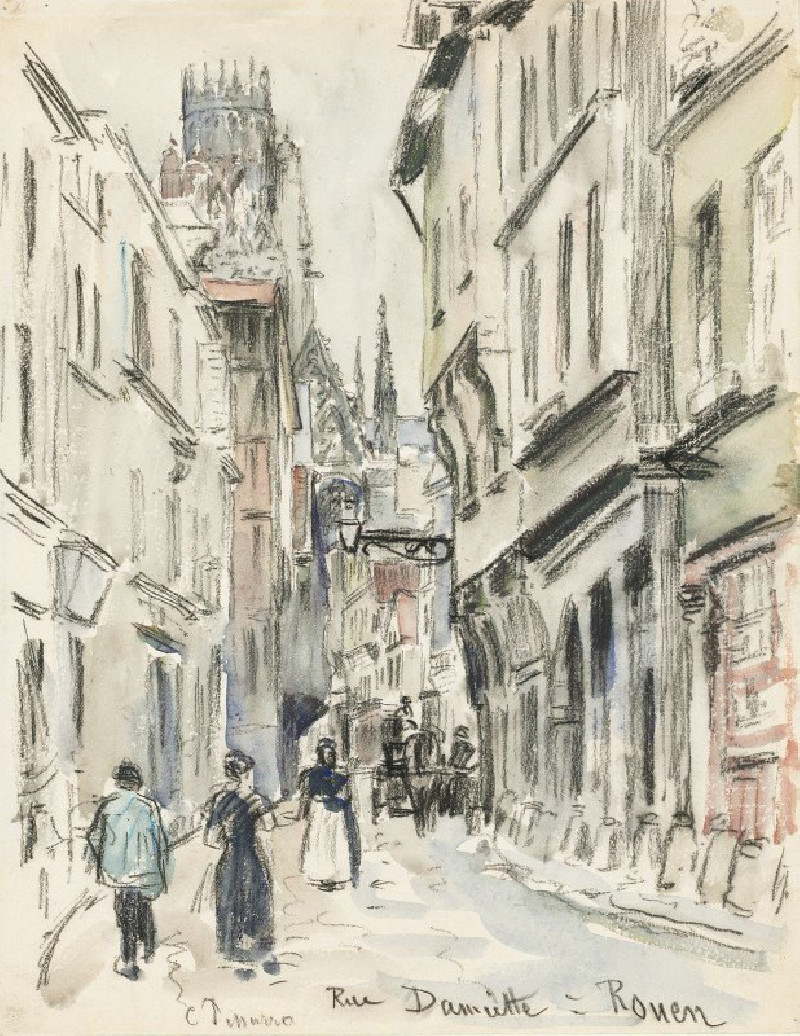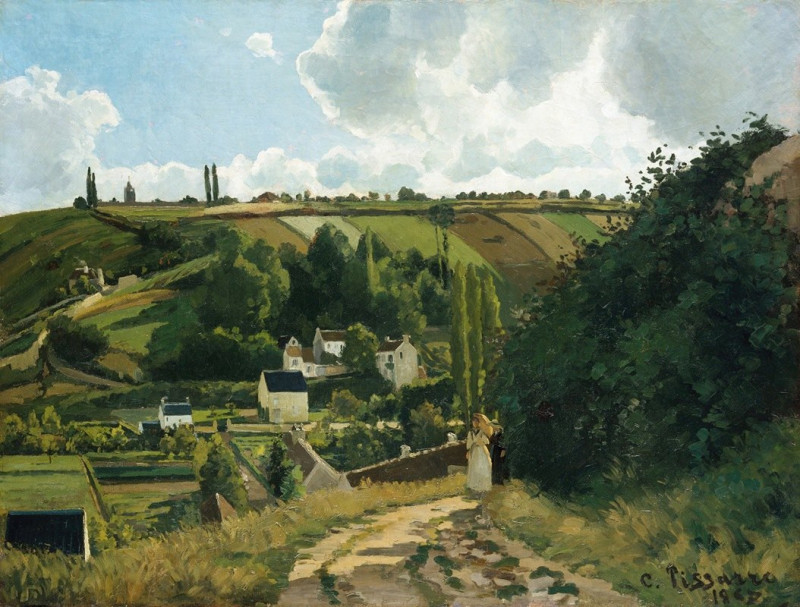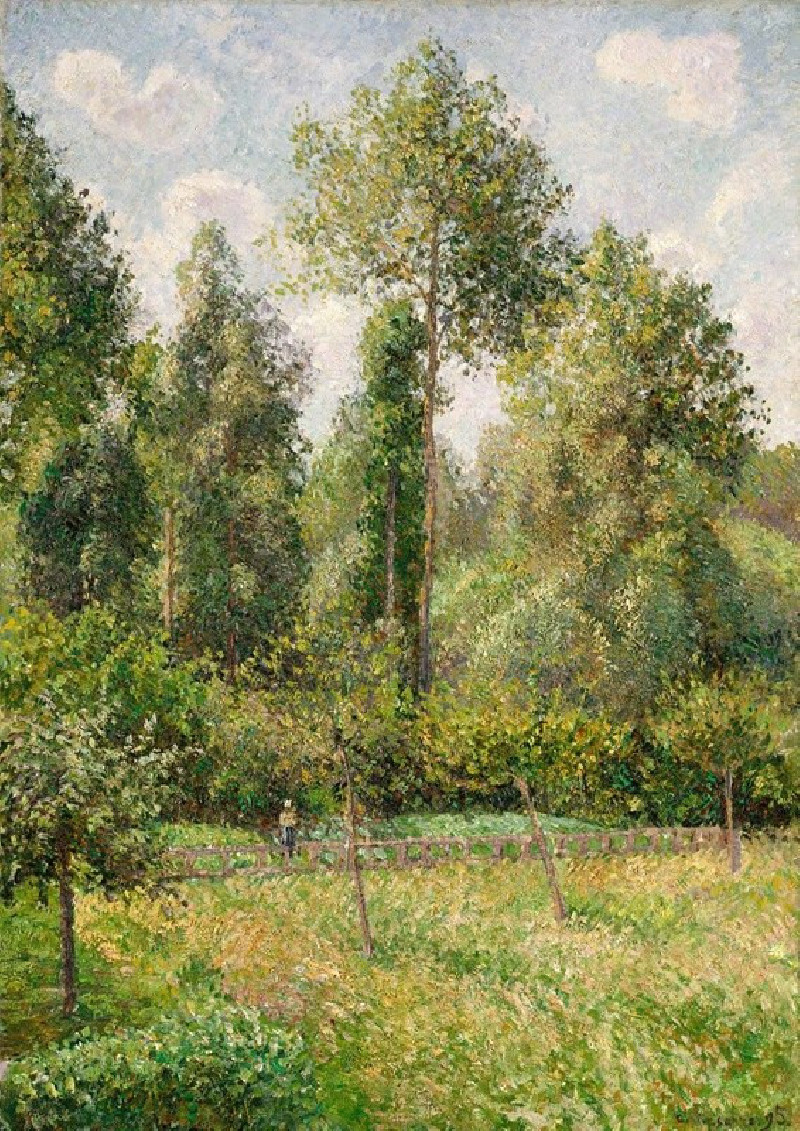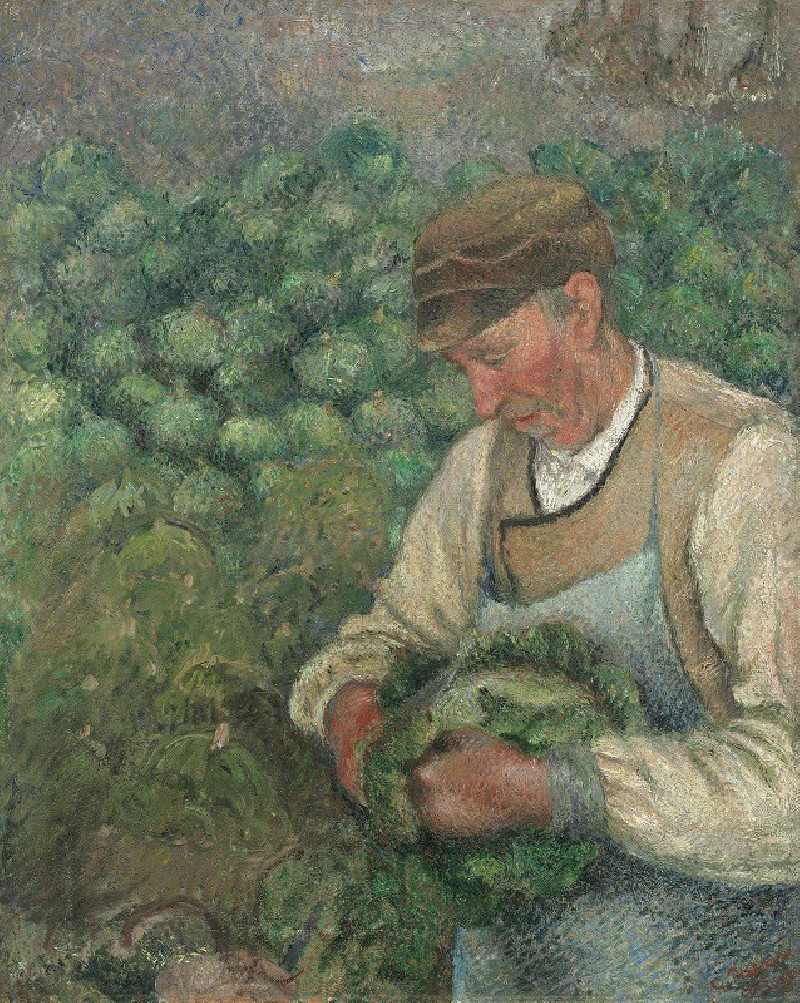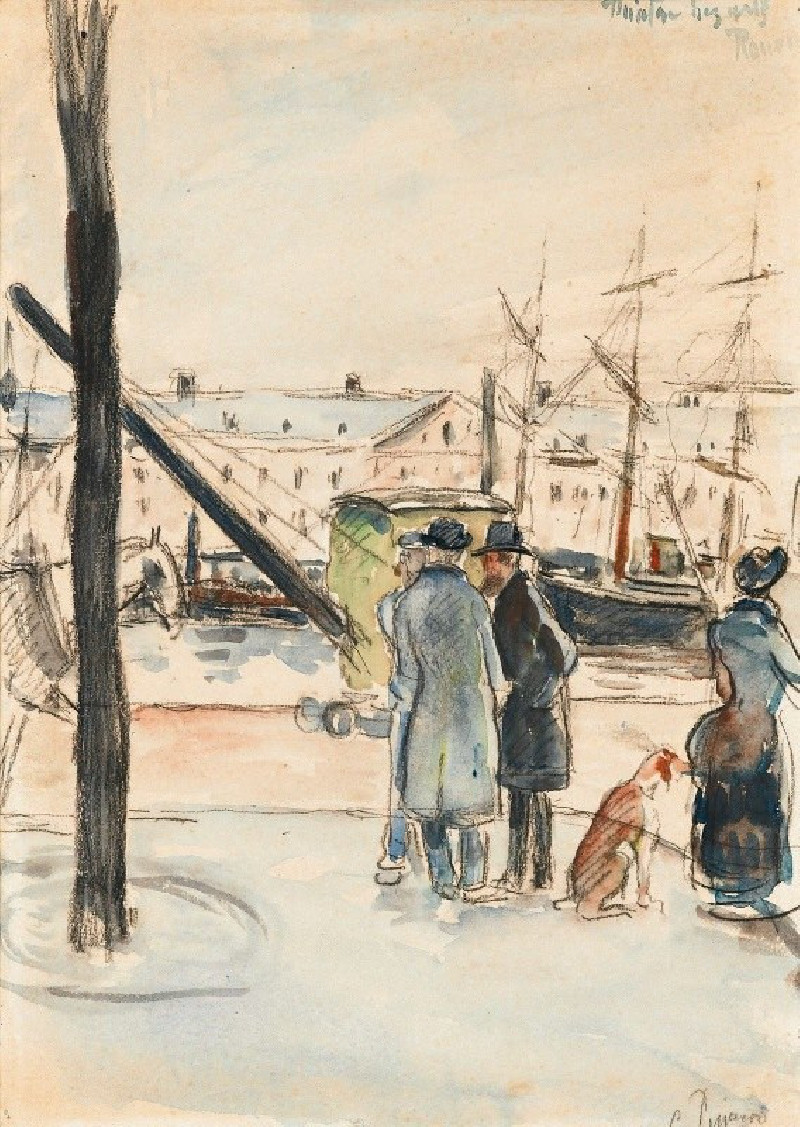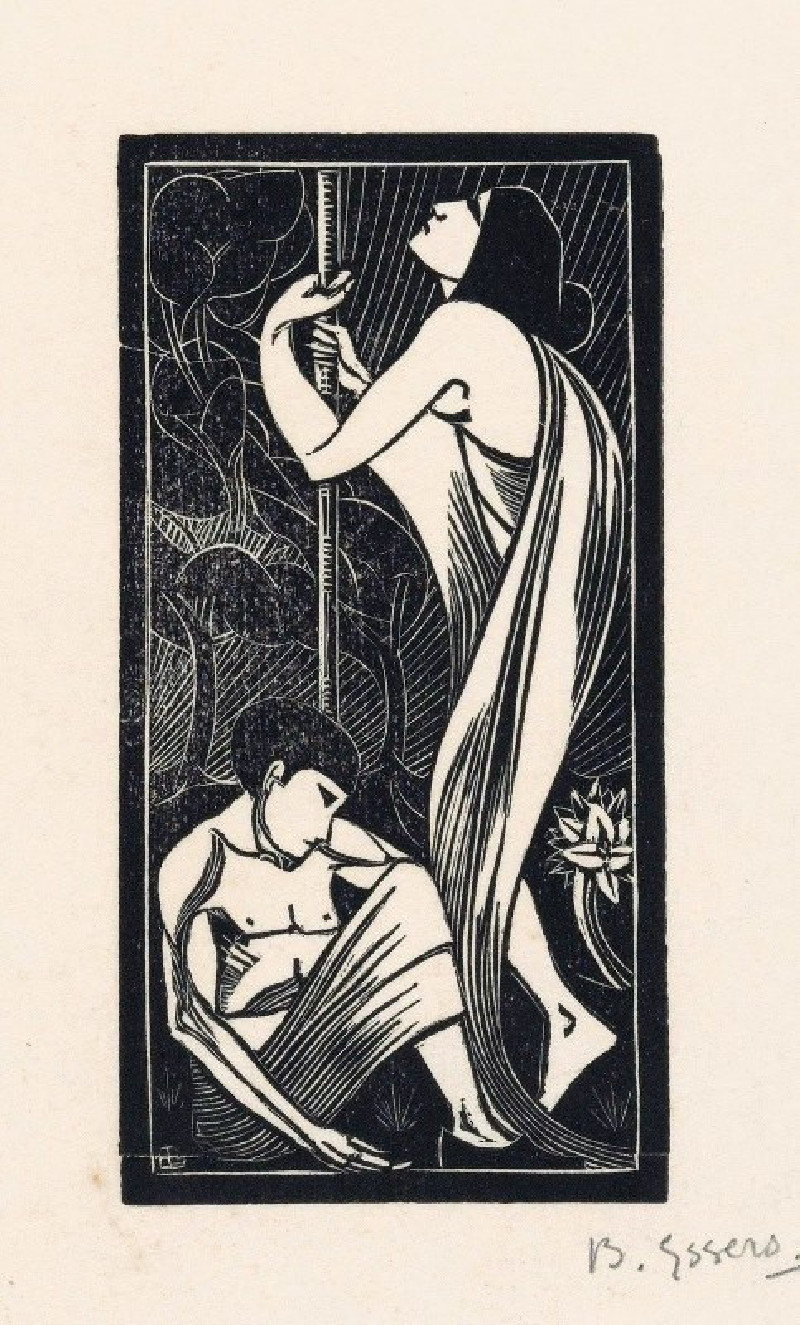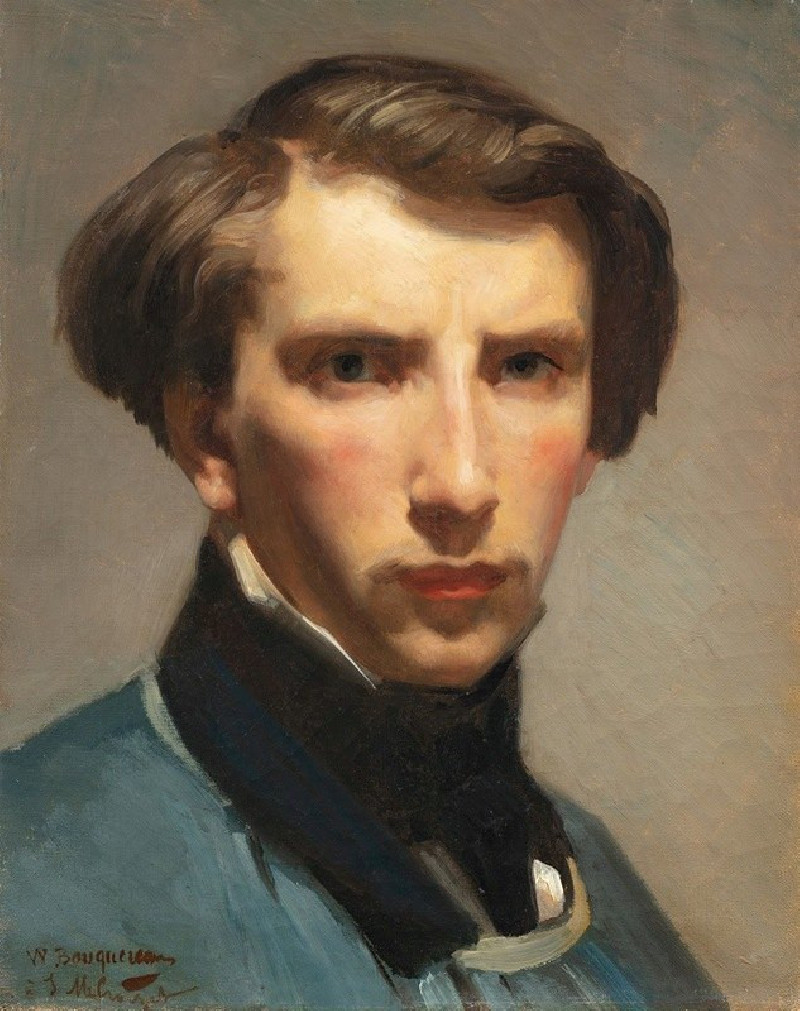Peasant Woman Carrying Two Bundles of Hay (1883)
Technique: Giclée quality print
Recommended by our customers
More about this artwork
"Peasant Woman Carrying Two Bundles of Hay" is a captivating work by French artist Camille Pissarro, painted in 1883. This painting is a sensitive portrayal of rural life, focusing on a peasant woman at the center of the composition. The woman, clad in a simple costume of striped blouse and blue skirt, balances two large bundles of hay, exuding a sense of strength and endurance.Pissarro has masterfully captured the lush countryside with vibrant brushwork that conveys the changing textures of the leaves and grass with subtle shifts in color, enhancing the naturalism of the scene. The pathway curving gently past her leads our eyes through the composition, inviting viewers to follow into the rustic environment depicted.With a muted palette, the artist emphasizes the overcast sky that hints at the onset of colder weather, reflecting the harsh realities of peasant life. Despite the weight of her physical labor, the woman's face carries a composed expression, suggesting resilience and acceptance of her daily toils.This artwork is not only a testament to Pissarro's skill and empathy as a painter but also serves as a significant social commentary on the conditions of rural labor during his time. It allows us a glimpse into the everyday struggles and the indomitable spirit of those often unseen in the grand historical narratives.
Delivery
Returns
Blessed are they who see beautiful things in humble places where other people see nothing. — Camille Pissarro
Camille Pissarro (1830-1903) was born on St.Thomas (now the US Virgin Islands) to a Portuguese father and a Dominican mother. He went to Paris to study art at Ecole des Beaux-Arts. He was an early pioneer of pointillism and neo-impressionism and later became a mentor of many famous impressionist painters including Cezanne, Manet, Renoir, and Gauguin. His paintings depicted rural and urban French landscapes and lifestyle. Many of his works politically captured images of peasants and laborers. Today, he is considered the father of impressionism.



